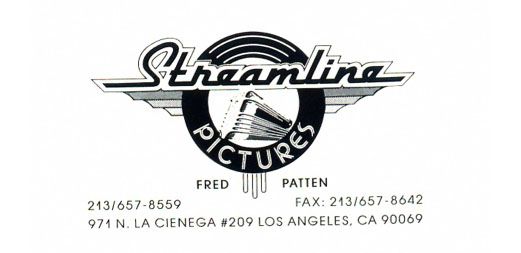
To Recap: Carl Macek and Jerry Beck established Streamline Pictures in 1988 with a mission to accurately dub Japanese animation after years of substandard, dumbed-down dialogue and replaced music – and to distribute anime in the U.S. (first to art theaters, then on VHS) to an audience that was not being served by the traditional Hollywood studios. Between 1988 and 1990, Beck and Macek dubbed Miayazaki’s Totoro and Kiki, and began distributing Laputa: Castle In The Sky, Twilight Of The Cockroaches, Lensman and Akira to cinemas in the United States.
Continuing my story: I was hired as Streamline Pictures’ first employee in January 1991. For this post, let’s switch to an outline format to see what Streamline accomplished from 1991 through 1993.
1991
JanuaryRobot Carnival premiered theatrically at the Cinema 21 in Portland, Oregon, on January 25 – 31.
March
The Zillion #2 and Zillion #3 Video Comics were released. Streamline also distributed Spike and Mike’s Festival of Animation #1 on video for Spike and Mike’s Mellow Manor Productions.
Spring
The first fan-magazine article about Streamline appeared in Animato! #21, Spring 1991; “Dateline: Streamline — Carl Macek on Streamline Pictures and Life After Robotech“, by Bob Miller (4 pages).
April
The Castle of Cagliostro (subtitled) premiered theatrically at the Film Forum in New York City, NY, on April 3 – 4. We got a 35 m.m. print from TMS, which had subtitled it in English to try (without success) to sell the movie for American general theatrical release. Despite what has been said on Retro Junk and elsewhere about MGM doing the subtitling in 1991, this was the same subtitled print that TMS had been showing in 1980.
May
The Zillion #4 and Zillion #5 Video Comics were released.
July
The Comic-Con moved to the new San Diego Convention Center in 1991. Streamline Pictures had an exhibitor’s booth there every year through at least 1996, with a professional portable display backdrop, beginning in 1992, that Carl brought every year. We may have had a booth in 1997; I don’t remember. We had definitely stopped attending as an exhibitor by 1998, although Carl and I still attended as individuals.
July

Jerry (right) presents Jack Schleh (left) the director/creator of COLONEL BLEEP with a copy of Streamline’s VHS, at his home in Miami Florida. (click to enlarge)
Carl was most enthusiastic about “rediscovering” the “lost” Colonel Bleep TV cartoons, made by the long-closed Soundac studio in Miami, and getting in contact with the director of Colonel Bleep, Jack Schleh. By this time Schleh was severely arthritic, living in a retirement community in Miami Florida. He was gratefully enthusiastic to have Colonel Bleep remembered, and eager to help us get it out on video. He bombarded Streamline with long handwritten letters with his memories of the Soundac staff producing the cartoons, covered with his distinctive Colonel Bleep art in water-color and colored pencil. Jerry Beck visited Mr. Schleh on behalf of Streamline and handed him a copy of Streamline’s first VHS release of Colonel Bleep shortly before he passed away. More sadly, all the Colonel Bleep masters that had been in storage in a Texas warehouse for decades, for 104 five-minute episodes, mostly turned out to be beyond restoration. Streamline got only two half-hour videos out of them, with covers in Schleh’s art style by Mike Kazaleh.
AugustSpace Angel #1 Video Comics was released. Space Angel had been made by Cambria Productions, the same studio that produced the better-known Clutch Cargo, also using the Synchro-Vox “living lips” process. Carl thought that Space Angel videos might be even more popular than Clutch Cargo because of its science-fiction/outer-space plot, and its Alex Toth art design; but they weren’t.
September
Fist of the North Star premiered theatrically (dubbed by Carl) at the Tower Theatre & Video in Salt Lake City, Utah, on September 27 – October 3. By this time, more of L.A.’s C/FO members wanted to help out around Streamline. Carl invited them to come to the audio studio during the Fist dubbing sessions and provide the background “wallah” crowd-noises. Since none of the fans were in the Screen Actors Guild, Carl would not let any of them have real speaking roles.
October
Clutch Cargo #2 and Zillion Special: Burning Night Video Comics were released.
November
Colonel Bleep #2 Video Comics was released.
December
Lensman and Robot Carnival became Video Comics releases; Streamline’s second and third theatrical features to enter the video market. Space Angel #2, with a cover by animator Peter Chung, was also released.

1992
January
Capital City Distribution named Akira as its top-selling video title for 1991, as reported by sales statistics by over 1,800 comics-specialty retailers throughout North America.
 February
February
Streamline’s Twilight of the Cockroaches was released on laser disc through Lumivision. This was the first American anime laser disc title.
March
The features Planet Busters, Robotech II: The Sentinels, and Windaria, and the TV series Nadia (#1), were released as Video Comics. I don’t usually approve of changing the titles of foreign films when they’re “Americanized”, but I had to agree that the Japanese title of Planet Busters – Birth – would be deadly for American sales. Carl had high hopes for the popularity of the new, American-made Robotech II: The Sentinels, since almost none of the American fans of the Robotech TV cartoons had been able to see the undistributed movie, but I don’t recall that it sold much better than usual for anime on home video at the time.
March
Vampire Hunter D (subtitled) premiered theatrically at the Cleveland Cinematheque in Cleveland, Ohio, on March 26 – 28.
April
The Nadia #2 and Vampire Hunter D (dubbed) Video Comics were released.
May
A collection of David Hand’s classic late 1940s British theatrical “Animaland” and “Musical Paintbox” cartoons was released as David Hand’s Animaland #1, on the Video Comics’ Archive Series.
July
Streamline produced four promotional buttons at the VSDA Eleventh Annual Convention, in Las Vegas, Nevada, featuring Kaneda from Akira, Ken from Fist of the North Star, Lupin III from The Castle of Cagliostro, and D from Vampire Hunter D. They quickly became collectables.

July
Nadia #3 was released.
August
Nadia #4 was released.
August
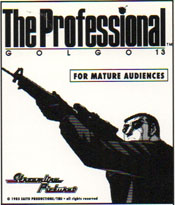 Protoculture Addicts #18, July-August 1992, profiled Streamline Pictures and featured a “video fest” extensive review of all its titles, in “Spotlight: Streamline Pictures”, by Fred Patten & Emru Townsend; ed. by Claude J. Pelletier (11 pages).
Protoculture Addicts #18, July-August 1992, profiled Streamline Pictures and featured a “video fest” extensive review of all its titles, in “Spotlight: Streamline Pictures”, by Fred Patten & Emru Townsend; ed. by Claude J. Pelletier (11 pages).
September
Fist of the North Star and Twilight of the Cockroaches (dubbed) were released on video.
October
The Professional: Golgo 13 premiered theatrically at the Brattle Theatre, Cambridge, MA, on October 2 – 3.
October
The Castle of Cagliostro (dubbed) and Nadia #5 were released as Video Comics.
November
3 X 3 Eyes #1 was released on video.
November
The Neo-Tokyo / Silent Möbius double-bill premiered theatrically at The Biograph, Georgetown, Washington, D.C., on November 20 – December 3.

December
Streamline began to release the Robotech series on video, with the regular series Robotech: The Macross Saga #1, Robotech: The Robotech Masters #1, and Robotech: the New Generation #1 (four episodes per video), and Robotech Perfect Collection: Macross #1, Robotech Perfect Collection: Southern Cross #1, and Robotech Perfect Collection: Mospeada #1 (two episodes in the original Japanese versions, with subtitles, and the corresponding two episodes from the American Robotech versions).
Date Unknown?
Sometime around here, Carl negotiated with a rich Malaysian investor to put so much money into Streamline Pictures that he would essentially have bought the company. He claimed that he had been knighted by the Sultan of Malaysia, and Carl instructed us to address him as “Sir Lee” (or “Sir Li”) whenever he came around. The theory was that he would become the figurehead president of Streamline Pictures, with Carl as General Manager or some similar title who would continue to run the company, using Sir Lee’s money to considerably expand operations. Carl worked out a very favorable deal; a contract was drawn up; and just as Carl was about to sign it, he asked to reread it. The contract was NOT what Carl had been shown earlier. It essentially fired the entire Streamline staff; made Sir Lee’s son the General Manager with an exorbitant salary; and looked like what Carl could tell from a hasty reading would have turned Streamline into a money-laundering front. Carl figuratively threw Sir Lee out.
1993
January-February
Laemmle’s Monica 4-Plex Theater in Santa Monica, CA presented a two-month Festival of Japanese Animation, featuring eight of Streamline’s theatrical anime features: Fist of the North Star, The Professional: Golgo 13, Neo-Tokyo/Silent Möbius, Lensman, The Castle of Cagliostro, Robot Carnival, Twilight of the Cockroaches, and Wicked City.
March
Dirty Pair: Affair on Nolandia, Nadia #6, Robotech: The Macross Saga #2, Robotech: The New Generation #2, and 3 X 3 Eyes #2 were released as Video Comics.
March
Lensman was released as a bilingual laser disc by Lumivision.
May
The Speed Racer Show, 80 minutes, premiered theatrically at the Ken Cinema, in San Diego, California, on May 13 – 16. This was the only “original” theatrical feature that Streamline Pictures produced. It was almost entirely Jerry Beck’s project. Here is his description of it:
“Carl had known father and son John & Jim Rocknowski for years. They had the U.S. rights to Speed Racer and were exploiting them – getting the show on MTV around 1991 (or so) was a big deal which boosted the show’s popularity anew. I met them a few times with Carl during the early Streamline days – and one day in (I believe) 1992, Carl walks into the office and tells me we can distribute a Speed Racer movie. I say, ‘Great – what is it, where is it?’ He says, ‘I don’t know, we will have to put one together’. I insist that I take a larger role in producing this film because it’ll be my neck on the line if it isn’t good – and I wanted to make sure it was at least a “decent” theatrical program.
“First thing we did, with the Rocknowskis’ approval, was to go to a film warehouse in the Valley (I forgot where it was) and look through their film holdings. Everything was 16mm, and most of the episodes had their color fading. The only useable thing we found there was a can of 35mm with the original Mach GoGoGo show opening in Japanese.
“Because of this, I inquired about if the show was shot in 35mm – and was there any way to get original negatives? The Rocknowskis contacted Tatsunoko and we found out that they would send us a duplicated neg of any episodes we wanted! I selected ‘The Car Hater’ (because it explained the Mach 5 and how it worked) and ‘The Race Against the Mammoth Car’ (just because I liked that one) and they sent us the uncut negatives. We matched this material against the English track re-recorded off a 16mm print. There were a few scenes in the Japanese version that weren’t in the US TV version as I recall, but they were action shots that did not require new dialogue. Once I knew we had Speed Racer with good color and crystal clear 35mm elements, I knew we had a viable ‘movie’.
“We wanted to ‘plus’ the film beyond just Speed Racer episodes – so we used the original Japanese opening titles and mixed it with a rock Speed Racer track that the Rocknowskis had the rights to. Streamline had been trying to make a feature out of old commercials from Playhouse Pictures – so we used several of those in the places where there was a commercial break – a Bondex commercial, a Smokey The Bear spot, A Flit bug spray commercial and a Milk Carton ad. We also restored the Colonel Bleep cartoon episode ‘The Treacherous Pilot’ and added that between the two Speed Racer story lines.
“The Rocknowskis then sold The Speed Racer Movie to USA Home Video… Beyond assembling the feature and the theatrical release, Streamline had nothing else to do with it.”
Streamline’s theatrical poster for the movie was seen on the wall of Ross Geller (David Schwimmer)’s apartment in the first (pilot) episode of the 1994-2004 TV series Friends (click to enlarge frame grabs below). The Speed Racer Show was renamed Speed Racer: The Movie by USA Home Entertainment (aka Family Home Entertainment) for VHS release and was commonly known under that title by the general public, and is often confused today with the live-action Speed Racer theatrical feature produced by Andy & Lana Wachowski and their company, released in May 2008.

Chandler in Ross’ apartment in the pilot episode of “Friends” (1994)
June
A Los Angeles gala premiere of The Speed Racer Show on June 9 at the Nuart Theater was hosted by KROQ-FM d.j. Richard Blade, and featured personal appearances by the original voice actors Peter Fernandez (Speed Racer) and Corinne Orr (Trixie). They were interviewed on KTLA’s Morning News and on KROC radio. The first day was a sellout at the Nuart.

Streamline paid too have Speed Racer Movie posters plastered all over L.A. in advance of the premiere showing.

Jerry Beck, Sally (last name ?) from Family Home Entertainment and Trixie’s voice Corrine Orr at the premiere of The Speed Racer Movie
June
Lensman, Robot Carnival, and Vampire Hunter D appeared as a Festival of Japanese Animation on The Sci-Fi Channel, on June 19th.
June
Doomed Megalopolis #1, Nadia #7, Robotech: The Robotech Masters #2, 3 X 3 Eyes #3, and 3 X 3 Eyes #4 were released.
July
Jerry Beck left Streamline Pictures to pursue other animation projects. Jerry had always been interested in animation in general, not just Japanese animation specifically, and he began to get frustrated by being seen as “only” an anime specialist. The immediate reason for his leaving was getting a contract with Ted Turner’s Turner Publishing in Atlanta to write the book The 50 Greatest Cartoons: As Selected by 1,000 Animation Professionals. This was a lavish, full-color, coffee-table book that helped elevate Jerry to the ranks of a “Well-Known Animation Expert” amongst those in the industry and the animators in the field. The 50 Greatest Cartoons was published in October 1994. Jerry did not return to Streamline Pictures. He went on to become a producer with Harvey Entertainment (The Baby Huey Show), an executive at Nickelodeon, Disney, and later freelance consult to Warner Bros., Columbia, and other American animation producers; writing more animation books; creating online animation-specialty websites; and more.
August
Meanwhile back at Streamline – Wendy Horowitz (a friend of Jerry’s) took over the film distribution duties. On video, Doomed Megalopolis #2, Nadia #8 and The Professional: Golgo 13 were released as Video Comics. This was Streamline’s final production of the Nadia series, even though the Japanese TV serial went on for a total of 39 episodes. The series completed its first story arc with episode #8, and Carl used the eight episodes that he produced in English as a promotional mini-feature to try to sell Nadia to all the TV networks. If he had made a sale, Streamline would have used the network’s money to produce the remaining episodes in English. Carl never succeeded, and Streamline went out of production before he gave up and returned to dubbing further episodes as Video Comics VHS cassettes.
August
Six of Streamline’s Video Comics titles were released in mass-market sell-through editions by Best Film & Video: The Castle of Cagliostro, Lensman, Robot Carnival, Windaria, Zillion: The Beginning (episodes #1 – #3), and Zillion Special: Burning Night.
August
Vampire Hunter D was released as a bilingual laser disc by Lumivision.
 August
August
Wicked City premiered theatrically at the Drexel Theatre, in Columbus, Ohio, on August 20 – 26.
October
Streamline Pictures moved to its own address, a large, airy two-story building (former warehouse) at the inland edge of Santa Monica, about thirty blocks from the beach; 2908 Nebraska Avenue, Santa Monica, California 90404. I got a large office all my own on the second floor, with a big picture window. At this time or just before, Streamline began to hire more employees, including a full-time secretary, Kara Redmon. We ended up with about a dozen employees overall, most in the new Streamline 3-D division. The building was tastefully decorated by Svea Macek in a red, yellow, and blue motif. I asked if there was any Romanian tie-in, since those are the Romanian national colors. She said that that was just a coincidence; she chose them because they looked pretty together. She also chose Streamline’s modernistic new furniture, and all aspects of the interior decoration.
October
Streamline started a separate division, informally dubbed Streamline 3-D, to design, manufacture, and market high-quality resin model kits, of figures taken from Streamline Pictures’ popular animation titles and (eventually) other licensed properties. The new division, managed by Al Zequeira, was set up in the rear of Streamline’s new building, with large resin vats and molds. Its first four models were 1:25 scale models of four of the Speed Racer racing cars.
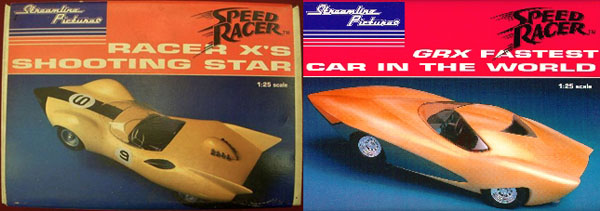
December
Doomed Megalopolis #3 and Lupin III: Tales of the Wolf #1 were released, along with Neo-Tokyo and Silent Möbius as separate Video Comics titles. Streamline got a lot of flak from the anime purists over publicizing Lupin III as “The Wolf”.
December
Robot Carnival and Robotech II: The Sentinels were released as laser discs by Lumivision. Akira was released by Voyager/Criterion as a bilingual CAV three-disc laser boxed set, with Streamline-supplied supplemental material including samples of the Japanese and American editions of Otomo’s original manga, storyboards, production materials, and more.
Date Unknown?
I don’t have a date for this, but I remember it as happening very soon after Streamline moved into its new building, around the end of 1993. Carl called everyone into the lunchroom and announced that Streamline had a brand-new logo. He had never been fond of the old logo that Jerry had chosen. Streamline Pictures had no connection with a streamlined locomotive, and a “Streamliner” design may have been cutting-edge in the 1930s, but it looked too old-fashioned today. He had gotten a friend (I promptly forgot his name — It wasn’t Chris Casady) to create a new CGI logo of the name “Streamline Pictures” in golden, then silvery chrome rising from molten lava and soaring into outer space; with a musical background. The new Streamline Pictures lettering (based on that of our Comic-Con display backdrop, which we’d also used at the 12th VSDA convention in July 1993) would be featured in black-&-white on our new stationery and business cards. We agreed that this was a big improvement over the old logo, and looked more competitive with the more modern-looking logos of the other anime specialty video releasers. This new logo was used through the end of the company.
Next week: Streamline Pictures, 1994 to 1996.




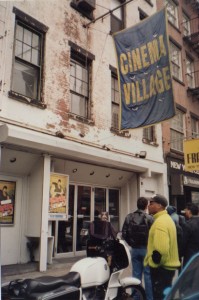

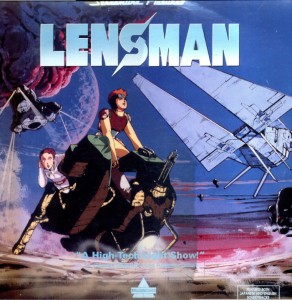
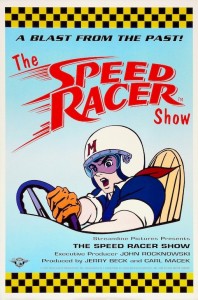

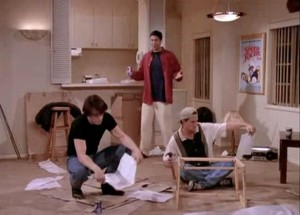

 Fred Patten (1940-2018) was an internationally respected comics and animation historian. He has written about anime or comic books for publications ranging from Animation Magazine and Alter Ego to Starlog. He was a contributor to The Animated Movie Guide (2005), and is author of Watching Anime, Reading Manga (2004, Stone Bridge Press), a collection of his best essays, and Funny Animals and More (2014, Theme Park Press), based upon his early columns here on Cartoon Research. He passed away on November 12th, 2018.
Fred Patten (1940-2018) was an internationally respected comics and animation historian. He has written about anime or comic books for publications ranging from Animation Magazine and Alter Ego to Starlog. He was a contributor to The Animated Movie Guide (2005), and is author of Watching Anime, Reading Manga (2004, Stone Bridge Press), a collection of his best essays, and Funny Animals and More (2014, Theme Park Press), based upon his early columns here on Cartoon Research. He passed away on November 12th, 2018.





































https://www.youtube.com/watch?v=YwnM3eMh3Q8
The Fist of the North Star Movie, taken from the VHS release, has all gore scenes censored. Scenes with color filter like Ken getting scarred by Shin’s finger and headless thug spraying on Bart’s face. There is a scene cut where the crowds were cheering Raoh as King, is a large man with big nose crushing the head of a chanter. The Italian VHS release doesn’t have color filter in some scenes and it includes the deleted scene: https://www.youtube.com/watch?v=JECb0ZJXQR0
Other harder gore scenes that have head explosions, death scenes of Zeed (Zender) and Heart, and Rei slicing the thug’s face with his hands have blurs with color ghosting. The Japanese theatrical trailer had only one scene with without color ghosting blur and that is a scene where Rei sliced the thug’s face: https://www.youtube.com/watch?v=Im0n1A6w9-0
I don’t know if anybody who has the VHS copy of the Fist of the North Star Movie Fully Uncensored from Rental stores. So far every fan believes that 35mm prints of uncut version of the Fist of the North Star Movie were destroyed in the warehouse fire and the semi-uncensored Italian VHS version is the closets they’ll ever see on the web. I don’t want to believe it. But I think there are still some of the uncut 35mm prints of the film in collector’s hands or the other company who haven’t used it yet.
I wish I could see the uncut film…
One reason why the ROBOTECH II: THE SENTINELS Video Comics release wasn’t a hit was because the content had already seen two VHS editions from Palladium Books. I personally have a copy of the first edition from 1987/’88. By ’93 the Robotech fandom was already moving past Macross II towards Macross Plus, and while the Sentinels comics by Eternity and Academy were still moving along the comics boom of the end of the Eighties was going bust.
Thanks for using my scan of the LD cover for Lensman! (it’s not perfect but it was the best I could do at the time)
Thank you, Chris!
Nowadays I could probably just snap a pic with my smartphone and get pretty decent results.
The irony is that that new Streamline Pictures animated logo looks much more dated than the old animated logo thanks to how quickly archaic that early CGI has gotten.
That is kinda funny, really.
This has been an interesting series. Planet Busters is like if Moebius had directed a Roadrunner cartoon. It always made me wonder what kind of world existed beyond what was shown in the movie.
It was an eye-opener of sorts. Never did care for the “Black Hole” style ending myself but, to each its own.
Both “Planet Busters” and “Windaria” were not technically Streamline dubs, but were ones that were licensed from Harmony Gold who previously produced those dubs in the late 80’s as “World of the Talisman” (orig. title “Birth”) and “Once Upon A Time” (Windaria).
There were some complaints about the ending of “Planet Busters/Birth” — not about Streamline’s production, because this was one of the first OVAs, and most anime fans were familiar with the Japanese original and knew that it ended this way. But most fans didn’t like the original “mysterious” ending where the dialogue cuts off just before the final scene, so the viewer sees the two women’s lips moving but never hears what they say that would have explained what the plot was about. It was too mysterious for most fans.
Ha ha. The “mystery” was that Kaname Productions ran out of money while finishing the OVA. It couldn’t afford to hire the voice actors to finish recording the dialogue for the ending, so it released the video unfinished. “Birth” was very cheap to license for that reason. Kaname Productions declared bankruptcy almost immediately afterward.
I bet. Without having watched Planet Busters and seeing the ADV version, I could figure out for myself what was happening at that moment, but I don’t want to spoil it here myself, but yeah, I see where they were going with having it be a story being told to the younger girl on a birthday picnic.
Damn. And I thought that was an artistic license (of course the 1980’s was full of that). Also a shame to hear of Kaname’s failure anyway. They seemed like a company that had potential but couldn’t quite make it past third base as I put it (Windaria certainly was a better effort I felt).
As I recall, most of the anime fans in the late 1980s thought that Kaname Productions’ best OVA was “Leda: The Fantastic Adventures of Yohko”. I recommended that Streamline get it, but The Right Stuf beat us to it. It’s pretty much forgotten today.
As I recall, most of the anime fans in the late 1980s thought that Kaname Productions’ best OVA was “Leda: The Fantastic Adventures of Yohko”. I recommended that Streamline get it, but The Right Stuf beat us to it. It’s pretty much forgotten today.
Isn’t that always the fate for anime in general? It all gets forgotten after it comes out.
We at Streamline were shocked when our license for “Akira” expired (1994?), and we did some checking with fans to make sure that it was still worth renewing. The majority opinion that we got was that it was, but there were many more comments than we’d expected like, “Oh, that’s so old now. We’d never buy an anime that old today!” and “We’ve already got ‘Akira’. Can’t you get something else that’s brand-new; more cutting-edge instead?”
“Streamline’s Comic Con booth in 1993.”
I remember those four “take one of each” bowls of the four Video Comics buttons. They were all mixed together at the end of each Comic-Con, and we had to separate them again for the next Comic-Con. We also had to make sure that none of the pins had become opened and might stick the fans reaching into the bowls, although these buttons usually kept their pins closed — unlike some other exhibitors with buttons with straight pins. The Video Comics buttons were leftovers from the 1992 VSDA convention in Las Vegas. We had lots of them at the 1992 Comic-Con, and a diminishing number at the 1993 and 1994 Comic-Cons. I don’t remember if we had enough left to bother putting them out at the 1995 Comic-Con, and I’m sure we didn’t in 1996.
I still don’t get where they even get the idea MGM had any involvement with this movie at all. The internet can certainly stretch too many lies like that.
That is very sad. At least something came out of it at all. Had DVD”s been around much earlier, I’m sure something could’ve been done about getting some great ‘extras’ for the release like an interview with Schleh or additional artwork.
I wonder how much luck ZIV International had with them previously in the 80’s (I think I still have one of those tapes).
In some way, it was nice to see the conclusion of Zillion even if it skipped over a good chunk of the TV series anyway. Nobody would ever had thought to release the OVA.
One thing about the Lensman release I would like to point out is how rather odd the transfer was on those tapes. I’m not sure what went on, but it always looked rather off to me the way there was a blueish tint for most of the film and the sound was very staticy and in mono. When I got a used LaserDisc copy off eBay years back, I was impressed to see a far-better transfer of the film than before (the blacks are black and not blue) and the sound was in stereo too!
Didn’t know that!
That must be a very RARE release. I never heard of this before, but I’d love to look for it if only to see those “Musical Paintbox” cartoons (seeings as the Animaland set continue to see VHS and DVD releases into the next century).
Oh GOD. That would’ve screwed things entirely had he not check the fine print. Remember folks, check the fine print!
The tape (released under the FHE label) did contain commercials from Playhouse Pictures along with a Colonel Bleep episode. Lionsgate at present appears to still ‘own’ distribution of this, if only going by this 2 year old clip on YouTube, but it shows how decent Streamline’s work on using the 35mm negs were for this.
https://www.youtube.com/watch?v=rz1MCgncIqg
At least we’re spared the “Island Episodes”!
These were the version I mostly found stuck in bargain bins around every video store in town. Good choice of titles I might add, though BF&V liked to record these in EP mode so those tapes worn out too quickly, but a lot better than the other set of anime movies they released with those HK dubs that time forgot (Dallos, Phoenix 2772, Macross in Clash of the Bionoids, etc.)
At least the fans should be thankful one of two Miyazaki episodes got released at all that month.
The Criterion release certainly got the best the LD format had to offer then. The Lumivision releases were lucky enough just to get dual-audio at all. Of course I hate to admit I find it hard watching Robot Carnival in Japanese when I had been so use to the English version by heart. Volkeson sounds awkward when you know he’s just some gaijin they bought in off the streets to voice him originally.
I first recall seeing this logo pop up on a later release of “Twilight of the Cockroaches” through Fox Lober Home Video (under their Mondo Pop label, though I think they got it through Orion Home Video anyway).
“Nadia” as originally planned by Gainax and sold to Japanese TV was only 26 episodes. When it was unexpectedly popular and Gainax was told to expand it to 39 episodes, the “Island episodes” where Jean and Nadia (and King) are temporarily separated from the rest of the cast were dropped into the middle of the story to pad it out. Most people don’t care for them.
This was not unusual, insofar that it was unusual for any TV animated series to become more popular than had been expected. “Macross” and “Giant Gorg” were two others that were padded with new episodes hastily written and dropped into the story. At the other extreme, there are many cases of series that were less popular than expected, and were wrapped up early. “Tekkaman, the Space Knight”. “Space Battleship Yamato”. “Southern Cross”.
Hey man, I had Haruhiko Mikimoto sign my copy of Macross: Clash of the Bionoids at Animazement 2013. He actually went out of his way to sign it when I explained that version was the only version of DYRL we ever got in the states, and he broke the “one autograph per person” con rule that was set up for the people in line. Up until that point, he never knew that version ever existed, which is what I kinda expected his response to be.
My version of that film was still shrink wrapped from a guy who sold comics out of a storage garage not to far from where I live. Sadly that guy passed away a couple of years ago.
Fred said…
“Nadia” as originally planned by Gainax and sold to Japanese TV was only 26 episodes. When it was unexpectedly popular and Gainax was told to expand it to 39 episodes, the “Island episodes” where Jean and Nadia (and King) are temporarily separated from the rest of the cast were dropped into the middle of the story to pad it out. Most people don’t care for them.
A good case of NHK seeing they had a hit on their hands and wanted to cash in further.
This was not unusual, insofar that it was unusual for any TV animated series to become more popular than had been expected. “Macross” and “Giant Gorg” were two others that were padded with new episodes hastily written and dropped into the story. At the other extreme, there are many cases of series that were less popular than expected, and were wrapped up early. “Tekkaman, the Space Knight”. “Space Battleship Yamato”. “Southern Cross”.
Reminded I know a person who discovered Southern Cross outside “Robotech” and liked what they tried to do there despite the shorten episode count it received.
Then Dustin chimed in with..
Hey man, I had Haruhiko Mikimoto sign my copy of Macross: Clash of the Bionoids at Animazement 2013. He actually went out of his way to sign it when I explained that version was the only version of DYRL we ever got in the states, and he broke the “one autograph per person” con rule that was set up for the people in line.
Joke’s on me I guess. Glad to see you got his attention and did that at all.
Up until that point, he never knew that version ever existed, which is what I kinda expected his response to be.
I’m sure for plenty that would be the case. It’s best forgotten, but for some of us, it’s a nice historic tidbit to pull out on occasions like that.
My version of that film was still shrink wrapped from a guy who sold comics out of a storage garage not to far from where I live. Sadly that guy passed away a couple of years ago.
Just like a pal I knew who got me into 16mm film collection.
@Chris:
Despite how atrocious that dub maybe, I still enjoy it. After seeing a handful of FHE anime dubbed releases (and god forbid the existence of DigiView Korean anime), I don’t think Clash of the Bionoids is the worst dub ever produced, but it is stuck in many top ten lists out there if they exist.
Speaking of bad dubs, I have my FHE Technopolice 21c copy, and I watched part of it not too long ago. Let’s just say I haven’t laughed so hard at a dub in a very long time as I did with that one. I am going to have to review that one day for my podcast.
I was a struggling college student in Florida during 1992-93 .. but I still managed to plunk down my hard-earned cash for each of the VHS volumes of the Nadia ‘Video Comics’ as they were released.
The ‘price-to-running-time’ ratio for the series ( ~$20 for about 25 minutes of content) was horrible by comparison to, say, AnimEigo’s Urusei Yatsura ( ~$30 for an average of 100 minutes) — but the show’s story-telling was so compelling, I really didn’t mind.
I was disappointed when Streamline discontinued the Nadia Video Comics with volume 8 .. though, at least, the story was at a natural ‘stopping point’ at the time.
A couple of years later, I sought-out and purchased the complete japanese Laserdisc boxed set of Fushigi No Umi No Nadia – The Secret of Blue Water — and finally got to see the rest of the show. It still ranks highly among my all-time favorite anime TV series. ^_^
That was the consolation there, Nadia certainly left you hangin’.
Even the Island episodes? (most would suggest skipping those at all cost)
Maybe my memory’s faded after more than twenty years, but I’m just about certain I saw AnimEigo tapes of Urusei Yatsura TV episodes at $39.95 per at the video store. Heck, when Pioneer first imported laserdiscs of Tenchi-Muyo OAV episodes, they were charging $35 per one-sided disc with one roughly half-hour length episode. The first story arc ran six episodes, so you ended up paying $210 for the equivalent of one feature film (after discounting repeated opening and closing titles). And we anime fans paid it! And we liked it! Sure, they were imports — the first series of Tenchi laserdiscs came in the original Japanese jackets and had English-language cover sheets pasted on the backs — but the prices were basically what the Japanese buyers were paying for OAVs. With time and the growth of the anime market in the US, prices came down, of course.
No, you’re right; the retail on AnimEigo VHS titles was $39.95 .. I was mis-remembering it as $29.95 -_-;
I don’t often like to think of how much $$$$ I blew on video, back when. Especially on imported Laserdiscs! ^^;
No, you’re right; the retail on AnimEigo VHS titles was $39.95 .. I was mis-remembering it as $29.95 -_-;
I don’t often like to think of how much $$$$ I blew on video, back when. Especially on imported Laserdiscs! ^^;
I’m sure plenty don’t. Those were trying times to be a fan, knowing you needed the necessary ‘funds’.
@ Chris Sobeniak:
I don’t mind the ‘island episodes’ as much as most seem to. ^^;
As you’d noted above, that entire arc was wedged-in after the series had already begun, and was farmed-out to an inferior studio, to boot. Nadia herself comes-across as rather ‘unlikeable’ during these episodes .. but there are still a few fun moments for the characters, here-and-there … especially after the Grandis gang reappears.
The only essential event to the overall storyline within the ‘island episodes’ is the discovery of Blue Noah … otherwise, I do often suggest that casual fans skip that arc, if they find themselves growing bored.
The island/Africa episodes should not have existed. Period. They really ruined the show.
As far as the dub for NADIA is concerned, I personally liked the ADV one more; not that I wouldn’t have been curious to see what Macek would have done if he was allowed to finish the series (particularly in the way of cutting down those awful episodes), but vocally, I found the voices in the ADV dub to be superior; I just liked hearing the children’s voices sound like children for a change, even if the accents were iffy at times.
Like I mentioned in my other comment, a fair comparison between the Streamline and Nadia dubs is impossible due to the Streamline dub not going past the first eight episodes.
I preferred the Streamline dub for these eight episodes, but I also liked the ADV dub, which leaves me wondering how a full comparison would have turned out.
All this time I been following CB and Cartoon Research, and i had no idea Jerry Beck was semi-responsible for making anime dubs as good as they are today and making anime as popular in America as they are now! :O